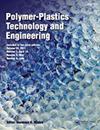Examination of Interpenetrating Polymer Networks of Polyurea in Silicone Molds Arising during Vacuum Casting Processes
Q2 Materials Science
引用次数: 6
Abstract
ABSTRACT We present an in-depth investigation of the aging effects in silicone molds for vacuum casting processes. Their lifetime is limited to a few production cycles due to contamination with the diisocyanate component of polyurethane casting materials. Using thermogravimetric analysis measurements, Fourier transform infrared spectroscopy, X-ray photoelectron spectroscopy, and helium-ion-microscopy the chemical and physical mechanisms of the aging process have been identified. It has been shown that a diffusion process of diisocyanate into the cavity surface leads to the formation of interpenetrating polymer networks of polyurea derivatives in silicone rubber. This has been proven by extracting and analyzing polyurea of low molecular weights from the silicone. GRAPHICAL ABSTRACT真空铸造过程中聚脲在硅胶模具中互穿聚合物网络的研究
摘要:我们对真空铸造过程中硅树脂模具的时效效应进行了深入的研究。由于聚氨酯铸造材料的二异氰酸酯成分的污染,它们的使用寿命仅限于几个生产周期。利用热重分析测量、傅里叶变换红外光谱、x射线光电子能谱和氦离子显微镜,确定了老化过程的化学和物理机制。研究表明,二异氰酸酯在硅橡胶中的扩散过程导致聚脲衍生物的互穿聚合物网络的形成。通过从硅胶中提取和分析低分子量聚脲,证明了这一点。图形抽象
本文章由计算机程序翻译,如有差异,请以英文原文为准。
求助全文
约1分钟内获得全文
求助全文
来源期刊

Polymer-Plastics Technology and Engineering
工程技术-高分子科学
CiteScore
1.71
自引率
0.00%
发文量
0
审稿时长
4 months
 求助内容:
求助内容: 应助结果提醒方式:
应助结果提醒方式:


